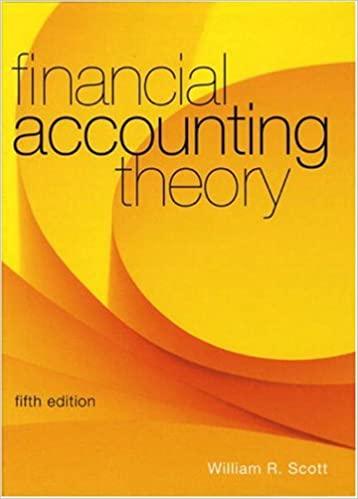Many firms reprice ESOs following major declines in their share price by lowering the exercise price. This
Question:
Many firms “reprice” ESOs following major declines in their share price by lowering the exercise price. This is because ESOs issued before the decline are deep out of the money, hence unlikely to be of any value. Such moves usually outrage shareholders, who have seen the value of their shares also fall but who receive no comparable benefits, and are prominently reported in the media.
Saly (1994) was an original analytical study of the repricing of ESOs. Her analysis applies to repricing after a market downturn, such as the downturn experienced in the early 2000s, and not to a firm-specific fall in share price that may be due to manager shirking.
As Saly points out, compensation contracts are incomplete. That is, it is unlikely that provisions for adjustments to compensation following a market downturn are anticipated and written into the compensation plan. The question then is, should the contract be “renegotiated” following a market downturn by repricing ESOs? If so, this would violate the general rule that, once signed, contracts tend to be rigid.
In Saly’s model, the answer is yes. Renegotiation of the ESOs’ strike price increases the correlation between manager effort and the performance measure (share price), since a market downturn is not a result of low manager effort. Without the possibility of renegotiation, the risk-averse manager would have to be compensated for the risk inherent in the possibility of a market downturn to attain reservation utility. If a downturn occurs and there is no repricing, the manager's expected utility will fall, since the expected proceeds from ESOs are effectively zero. This will cause him/her to either shirk or leave the company.
In June 2001, Nortel Networks Corp. announced that it was cancelling its existing ESOs and replacing them with new ESOs with a lower strike price. Nortel's share price, which had been in excess of $100 when many of the ESOs were issued, suffered following the market collapse of share prices of high-tech firms, and was trading in the $20 range at the time of the announcement. Nortel's move was widely reported in the financial media and drew significant negative comment. For example, The Globe and Mail June 5, 2001)
quoted Carol Bowie of the Investor Responsibility Research Center as saying “ . . . you can't make the 50-yard kick. So we'll cut it down to35.
” It also quoted J. Richard Finlay, head of the Center for Corporate and Public Governance, as saying “We'd all like to be told our high school physics test where we got 35 out of 100 is now 35 out of 50, but shareholders don’t have that luxury.”
Nortel defended its move by claiming it was necessary to retain key employees, pointing out that top manager ESOs were not being repriced (this would require shareholder approval) but only those of lower level employees. In the same issue of the Globe, Brian Milner pointed out that the cost to Nortel of repricing the ESOs is zero, and that no further dilution of shareholders’ equity will result since the old ESOs are being cancelled.
Nevertheless, Milner comments that in the public eye the repricing is still “a reward for crummy performance.”
Required
a. In the light of Saly’s model, do you agree with Nortel's ESO repricing? Explain why or why not.
b. Nortel planned to cancel existing ESOs and replace them with new ones, rather than simply repricing the existing options to a lower exercise price. Recall that in 2001, GAAP did not require expensing of ESOs. Rather, most firms, including Nortel, followed APB 25 (see Section8.3) in the financial statements proper, reporting the fair value of ESO expense in a note to the financial statements. Why do you think Nortel replaced the old ESOs with new ones, rather than simply repricing the existing ones?
c. In its 2003 proxy statement, the Compensation Committee of General Electric Company reported that the company has a policy of not repricing ESOs. Why would a company have such a policy?
Step by Step Answer:






